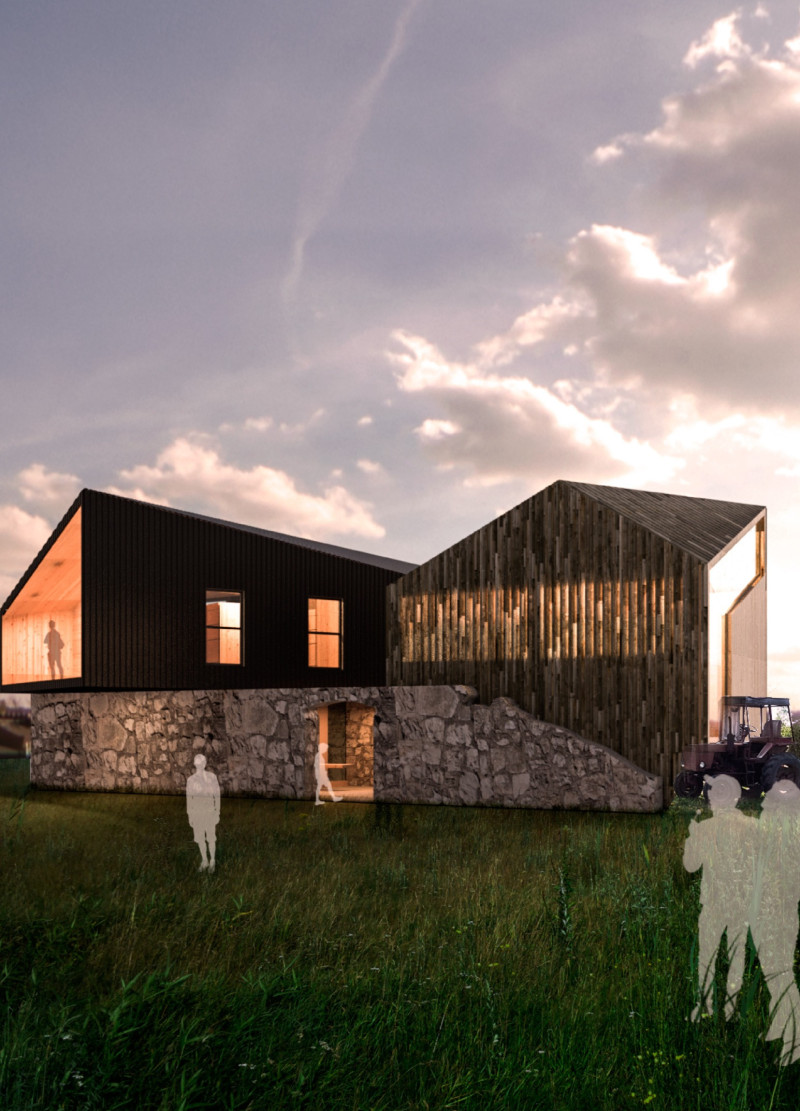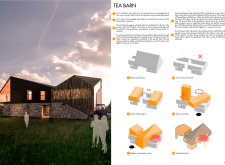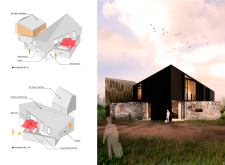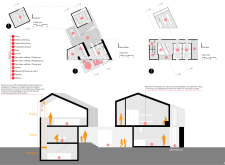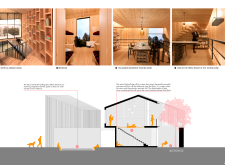5 key facts about this project
The project aims to repurpose a barn into a facility for tea production and guest accommodation. Located in a rural environment, it prioritizes sustainability and community interaction while honoring the historical character of the original structure. The design connects traditional farming practices with modern needs, creating spaces that serve both production and hospitality functions.
Design Strategy
The architectural layout divides the building into two main sections: the tea-making workshop and the guesthouse. These sections are positioned on the barn's existing walls and separated by a patio, which acts as a communal area for guests. The workshop is incorporated within one of the stone wall galleries, offering an elevated interior space suitable for tea processing activities.
Orientation and Bioclimatic Considerations
The guesthouse is aligned along a north-south axis to make the most of natural light and warmth. This strategic orientation creates two trapezoidal courtyards on the ground floor, allowing for improved air circulation and outdoor connections. An apple tree is thoughtfully included in one of these courtyards, further supporting the project's goal of blending nature with human activity.
Material Selection
Materials chosen for the building emphasize sustainability and resourcefulness. The tea-making workshop features wood as the exterior material, while the guesthouse uses corrugated metal sheets, both of which reflect the barn’s historical context. Interior walls are finished with plywood, enhancing the cozy feeling of the spaces. This selection of materials maintains a link to the past while fulfilling the functions of a modern facility.
Social Spaces and User Experience
Communal areas such as a fire pit and a vertical library enhance the social environment, encouraging guests to interact with one another. These spaces provide opportunities for conversation and connection, fostering a sense of community among visitors. The double-height section of the guesthouse connects public and private areas, allowing ample natural light to pour inside and creating a warm atmosphere for relaxation.
A notable feature is the pulley system in the tea-making workshop. This system moves dried tea leaves from the drying area to the basement where they are packaged. It adds an engaging element to the experience and allows users to understand the tea production process in a more hands-on way.


